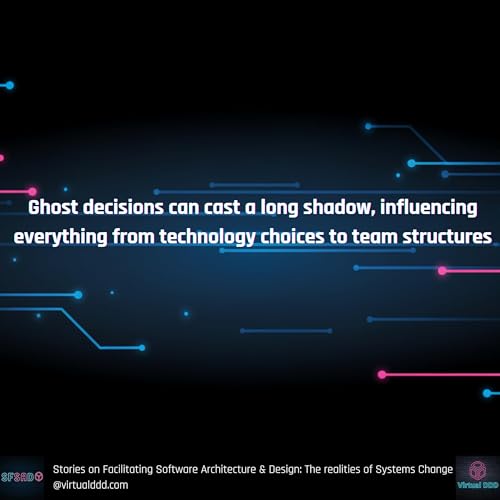The episode explores the tension between necessary on-the-spot decision-making during a software incident and subsequent organizational governance. Andrea’s story sets the scene: a colleague makes a critical, correct decision under pressure, only to have a later, higher-level investigation reverse it without adequately addressing the systemic issue that caused the incident, leading to frustration and burnout. We then further discuss how organizations—whether centralized or decentralized—often struggle with decision paralysis and the human consequences of chronic underinvestment in long-term fixes. The conversation emphasizes that true decentralized architecture requires not only empowering individuals to act but also leadership allyship and robust, non-weaponized processes to support and record their actions.
The core of the governance solution lies in documenting decisions effectively and creating a culture of learning over blame. To avoid "decision paralysis" and preserve the historical context, the hosts advocate for recording critical choices using Architectural Decision Records (ADRs). A key principle is that these records should be immutable; any subsequent change must be documented as a new, superseding decision rather than reopening the original. Furthermore, decision-making health can be assessed both quantitatively (by measuring flow and reversal rates) and qualitatively, by including sense-making questions about team readiness and feelings toward the decision, drawing on insights from practitioners like Rebecca Wirfs-Brock. This approach transforms governance from a bureaucratic bottleneck into a feedback loop that highlights deeper systemic failures.
Key Takeaways for Architectural Governance- Immutable Decisions: Decisions recorded in ADRs must be treated as read-only history. Reversals or changes should always be documented as new, superseding decisions to prevent "decision paralysis."
- Leadership Allyship: Managers should use their political capital to support and empower the team's expert decisions, acting as facilitators and advocates rather than simply taking over.
- Systemic Focus: Governance must move beyond validating individual actions to addressing the root causes of repeated incidents and failures to prevent team burnout.
- Decision Metrics: Measure the health of the decision-making process both quantitatively (number of decisions, time to decide, rate of reversals) and qualitatively (team's emotional readiness/frustration).
 23 min
23 min 20 min
20 min 20 min
20 min 19 min
19 min 17 min
17 min Sep 2 202523 min
Sep 2 202523 min
